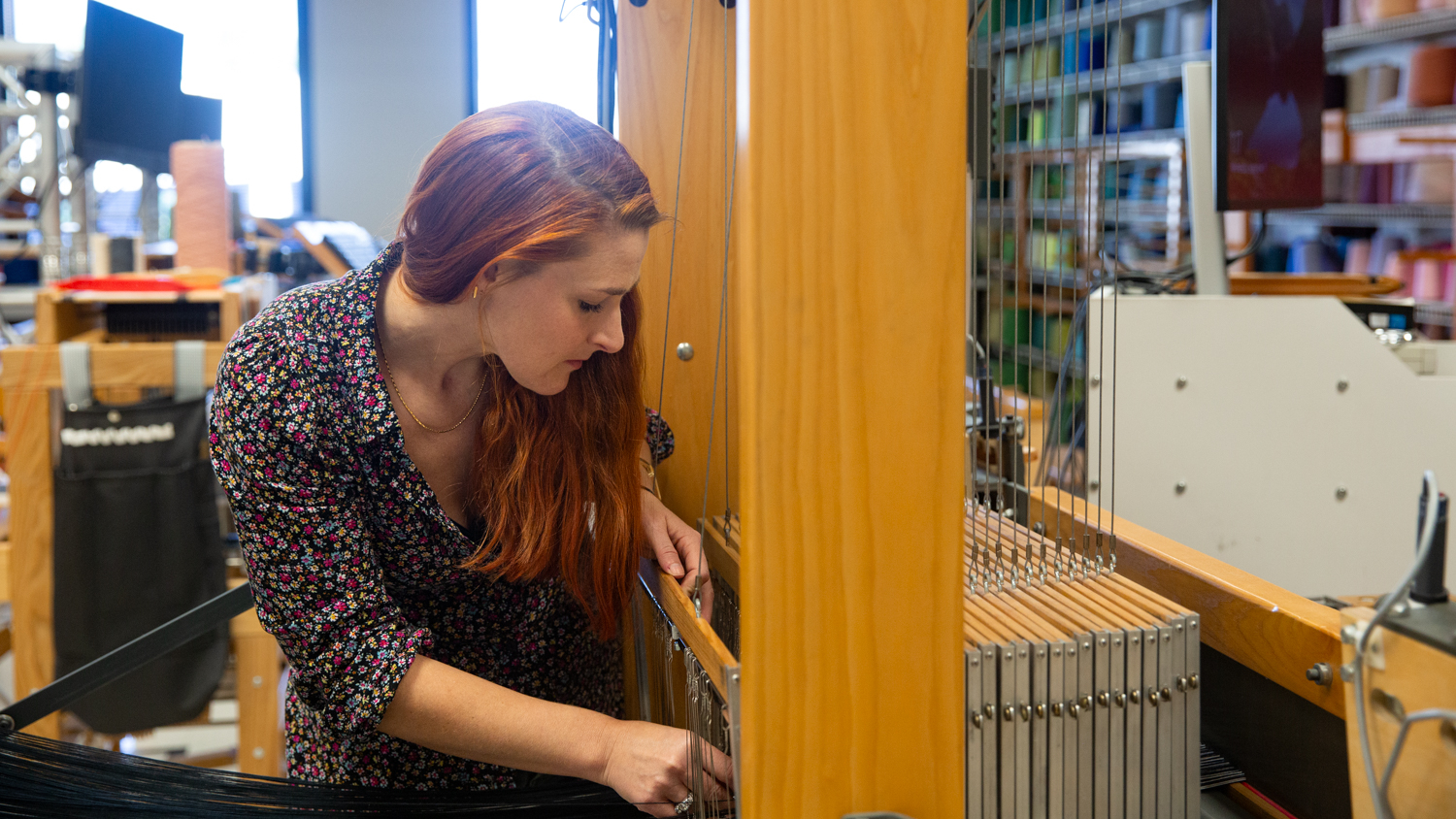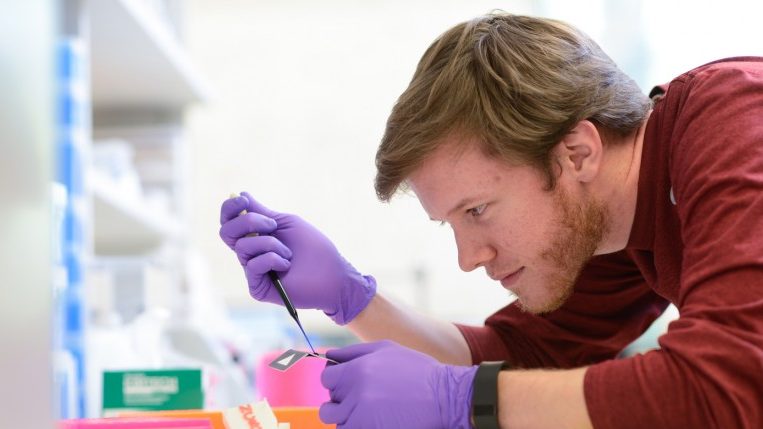When Jeanine Fry first began her college career studying theatre design, she didn’t know she would one day be a business owner and award-winning researcher.
Originally drawn to costume design, Fry was fascinated by the power of apparel to bring characters to life and express personality. Following graduation, she began working in ready-to-wear tailoring, where the constant product flow exposed her to the volume of overproduction in the industry. Fry knew she wanted a change.
“Seeing the excess production of product led me to the custom apparel industry. Prior to starting graduate school, I ran the tailor shop for a custom suit company,” she says. “What was ideal about that is we were only making products that people were asking us to make. That alleviated my guilt in participating in an industry that is so excessive, but there were a couple of things that I still wanted to see change.”
Fry’s experience with suiting, which is primarily made up of woven fabrics, got her thinking about the possibilities for made-to-order 3D woven garment production. This zero-waste process uses custom measurements to create a seamless product that is more comfortable and durable for the wearer. Once Fry began looking into graduate school programs, she decided she wanted to focus on research and sustainability.
“I knew that I wanted to develop a technology that could actually be turned into an industrial process and research sustainable production processes,” Fry explains. “When I decided that my focus needed to involve research, that was where the Wilson College of Textiles came in. I now consider myself a researcher and a designer on the same level.”

Research and teamwork
LOOM3D leverages standard weaving machines and techniques to create seamless woven garments. Fry began this project in the Wilson College’s Master of Textiles program with guidance from her advisors: Abdel-Fattah Seyam, head of the Department of Textile and Apparel, Technology and Management, and Janie Woodbridge, assistant professor. The two faculty members are co-inventors of LOOM3D’s technology.
“In developing the business, the biggest challenge is that it’s always something I’ve never done before,” Fry explains. “The challenge is feeling confident in knowing what the next steps are. The support from not only Dr. Seyam and Janie but also the MBA [master of business administration] program at NC State has alleviated that feeling.”
She has used her time in the Ph.D. in textile technology management program to expand both the research and business elements of her startup. That includes getting LOOM3D’s technology licensed through NC State’s Office of Research Commercialization, which allows students and faculty to utilize their research to develop startups.

Through the MBA program, Fry completed a certificate in technology entrepreneurship and commercialization. Lisa Chang, Fry’s certificate adviser, helped navigate business procedures. Through the program, she also met Kalindi Kapadia and Brian Kelly who were able to use their final course to create the startup and now work on the business team.
“The research is happening primarily on product development and what we can do with the weaving machine, whereas the business is exploring how this fits into the industry and who are our customers, all of the other things outside of the actual technology,” Fry details.
Making a stand-out product
Why 3D wovens? Fry proposes that there is ample opportunity for woven whole garment production that benefits the environment, the consumer and the industry.
“Our initial product intention is to do a seamless jean because it is specifically a woven product. One of the things that I am working on is presenting a product that isn’t so futuristic or foreign that it discourages the consumer,” Fry says. “Even if it never fully takes over, technology like whole garment production has to push cut and sew forward to be competitive.”
As product development and research progress, Fry and the LOOM3D team are looking forward to entering and changing the industry for good.
“With traditional cut and sew where you order from a factory that’s across the globe and high order minimums are required, you end up with excess product,” Fry explains. “Considering how much apparel we make globally, that’s a really large portion of wasted product, natural resources, manpower, etc. Enabling processes as solutions should be the future of apparel production.”
This year, LOOM3D joined the NC IDEA MICRO grant cohort and received NC State’s Venture Pack challenge award, both of which provide financial aid that the team can use to continue their research and cover business expenses.
This post was originally published in Wilson College of Textiles News.
- Categories:



